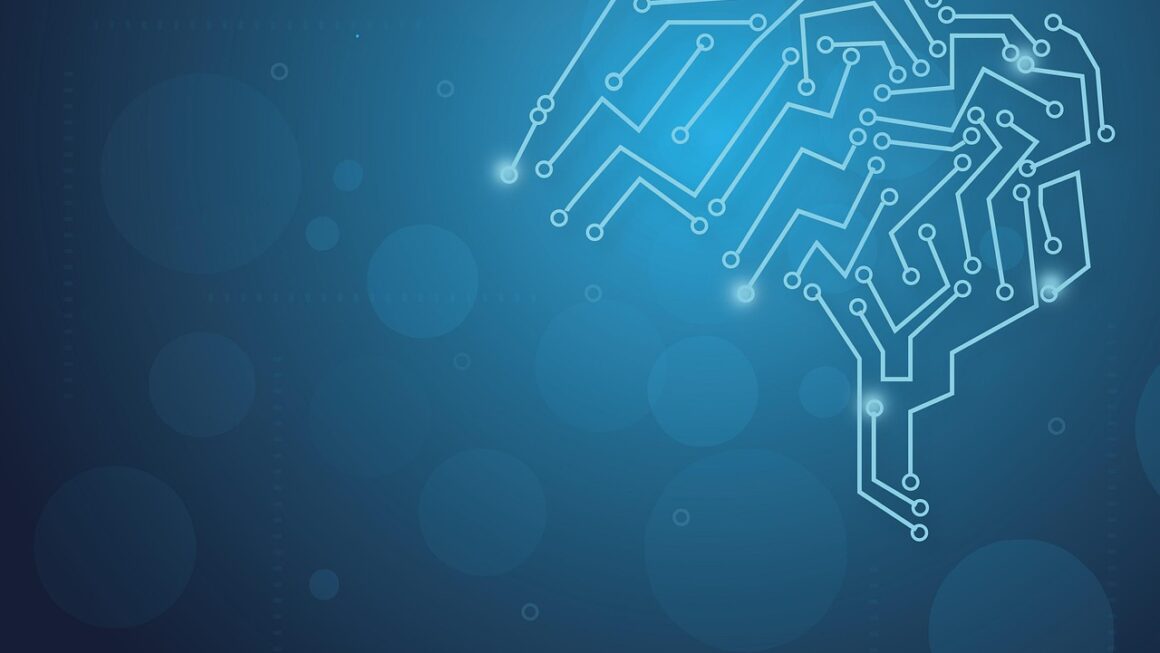The artificial intelligence (AI) landscape is constantly evolving, with new breakthroughs and applications emerging at an astonishing pace. Staying ahead of these advancements is crucial for businesses and individuals alike who seek to leverage the power of AI to improve efficiency, drive innovation, and gain a competitive edge. This article will delve into the most significant AI trends shaping the future, providing you with valuable insights and actionable strategies to navigate this transformative technology.
The Rise of Generative AI
What is Generative AI?
Generative AI refers to AI models that can generate new content, including text, images, audio, and video. Unlike traditional AI that analyzes and classifies existing data, generative AI creates something entirely new based on patterns learned from training data.
- Examples include:
Text Generation: Creating marketing copy, writing code, composing emails, or even drafting entire articles.
Image Generation: Producing realistic or stylized images from text prompts, creating variations of existing images, or generating entirely new concepts.
Audio Generation: Composing music, generating sound effects, or creating synthetic speech.
Video Generation: Creating short video clips, animating characters, or generating realistic simulations.
Applications and Benefits
Generative AI is transforming various industries by automating creative tasks, accelerating content creation, and enabling personalized experiences.
- Marketing and Advertising: Generating ad copy variations, creating personalized marketing emails, designing visual content for social media. For example, tools like Jasper.ai can generate compelling ad copy based on provided keywords and target audience.
- Product Design: Generating design concepts for new products, creating realistic prototypes, and optimizing designs based on user feedback. Companies are using generative design software to explore numerous design options quickly.
- Content Creation: Assisting writers with brainstorming ideas, drafting articles, and creating engaging social media content. Tools like GPT-3 can be used to write different creative text formats, like poems, code, scripts, musical pieces, email, letters, etc.
- Entertainment: Creating special effects for movies and games, generating unique musical compositions, and developing interactive storytelling experiences.
Challenges and Considerations
While generative AI offers tremendous potential, it also presents certain challenges and ethical considerations:
- Bias: Generative AI models can inherit biases from the data they are trained on, leading to discriminatory or unfair outputs.
- Copyright Issues: The use of copyrighted material in training data can raise legal concerns regarding the ownership of generated content.
- Misinformation: Generative AI can be used to create fake news, deepfakes, and other forms of misinformation, posing a threat to public trust.
- Job Displacement: Concerns exist that generative AI may automate certain creative jobs, leading to job losses.
AI-Powered Automation
Intelligent Process Automation (IPA)
Intelligent Process Automation (IPA) combines Robotic Process Automation (RPA) with AI technologies like machine learning (ML) and natural language processing (NLP) to automate complex business processes.
- How it Works: IPA automates tasks that require cognitive abilities, such as understanding natural language, making decisions based on data, and adapting to changing circumstances.
- Examples:
Automated Invoice Processing: Extracting data from invoices, matching it with purchase orders, and processing payments automatically.
Customer Service Chatbots: Answering customer inquiries, resolving issues, and providing personalized recommendations.
Fraud Detection: Identifying fraudulent transactions by analyzing patterns and anomalies in data.
Benefits of AI-Powered Automation
- Increased Efficiency: Automating repetitive tasks frees up employees to focus on more strategic and creative work.
- Reduced Costs: Automating processes reduces labor costs and minimizes errors.
- Improved Accuracy: AI algorithms can perform tasks with greater accuracy than humans, reducing the risk of errors.
- Enhanced Customer Experience: AI-powered chatbots and personalized recommendations can improve customer satisfaction.
Actionable Takeaway: Identify Automation Opportunities
Begin by identifying areas within your organization where repetitive tasks are consuming significant time and resources. Explore how AI-powered automation can streamline these processes and improve overall efficiency. For example, consider automating data entry, customer support inquiries, or routine report generation.
AI in Healthcare
Personalized Medicine
AI is revolutionizing healthcare by enabling personalized medicine, which involves tailoring treatments to individual patients based on their genetic makeup, lifestyle, and medical history.
- AI-Powered Diagnostics: Analyzing medical images, such as X-rays and MRIs, to detect diseases early and improve diagnostic accuracy.
- Drug Discovery: Accelerating the drug discovery process by identifying potential drug candidates and predicting their effectiveness.
- Personalized Treatment Plans: Developing personalized treatment plans based on individual patient characteristics and disease profiles.
Remote Patient Monitoring
AI-powered remote patient monitoring systems allow healthcare providers to track patients’ health remotely, enabling early detection of health problems and improving patient outcomes.
- Wearable Sensors: Collecting data on patients’ vital signs, activity levels, and sleep patterns.
- AI-Powered Analysis: Analyzing the data to identify potential health risks and alert healthcare providers.
- Virtual Care: Providing patients with virtual consultations and remote monitoring services.
Ethical Considerations
The use of AI in healthcare raises ethical considerations, such as data privacy, algorithmic bias, and the potential for job displacement. It’s essential to address these concerns to ensure that AI is used responsibly and ethically in healthcare settings.
Edge AI
What is Edge AI?
Edge AI involves running AI algorithms on devices at the edge of the network, rather than relying on centralized cloud servers. This enables faster processing, reduced latency, and improved privacy.
- Examples:
Autonomous Vehicles: Processing sensor data and making decisions in real-time without relying on a cloud connection.
Smart Cameras: Analyzing video footage to detect suspicious activity and alert security personnel.
Industrial Automation: Monitoring equipment and optimizing performance in real-time.
Benefits of Edge AI
- Reduced Latency: Processing data locally reduces latency, enabling faster response times.
- Improved Privacy: Data is processed on the device, reducing the risk of data breaches.
- Increased Reliability: Edge AI can operate even without a reliable internet connection.
- Reduced Bandwidth Costs: Processing data locally reduces the amount of data that needs to be transmitted to the cloud, reducing bandwidth costs.
Applications Across Industries
Edge AI is finding applications in a wide range of industries, including:
- Manufacturing: Predictive maintenance, quality control, and robotic automation.
- Retail: Personalized recommendations, inventory management, and fraud detection.
- Transportation: Autonomous vehicles, traffic management, and logistics optimization.
- Healthcare: Remote patient monitoring, medical imaging analysis, and wearable health devices.
AI and Sustainability
Optimizing Resource Consumption
AI can play a crucial role in promoting sustainability by optimizing resource consumption across various industries.
- Smart Grids: Optimizing energy distribution and reducing energy waste.
- Precision Agriculture: Optimizing irrigation and fertilization to reduce water and chemical usage.
- Supply Chain Optimization: Reducing transportation costs and minimizing waste in the supply chain.
Monitoring Environmental Impact
AI can be used to monitor environmental conditions and detect pollution, enabling timely interventions to mitigate environmental damage.
- Air Quality Monitoring: Analyzing air quality data to identify pollution sources and implement mitigation measures.
- Water Quality Monitoring: Monitoring water quality to detect pollutants and protect aquatic ecosystems.
- Deforestation Detection: Analyzing satellite images to detect deforestation and prevent illegal logging.
Promoting Circular Economy
AI can facilitate the transition to a circular economy by optimizing waste management and promoting recycling.
- Waste Sorting: Automating the sorting of recyclable materials to improve recycling rates.
- Predictive Maintenance: Extending the lifespan of products by predicting and preventing failures.
- Product Design for Disassembly: Designing products that are easier to disassemble and recycle.
Conclusion
The AI landscape is evolving rapidly, with groundbreaking innovations impacting virtually every aspect of our lives. From generative AI and intelligent automation to AI-powered healthcare and edge computing, the potential of AI is immense. By understanding these key trends and embracing AI-driven solutions, businesses and individuals can unlock new opportunities, drive innovation, and create a more efficient, sustainable, and equitable future. Staying informed and adaptable is crucial for navigating the exciting journey that lies ahead in the world of artificial intelligence.




